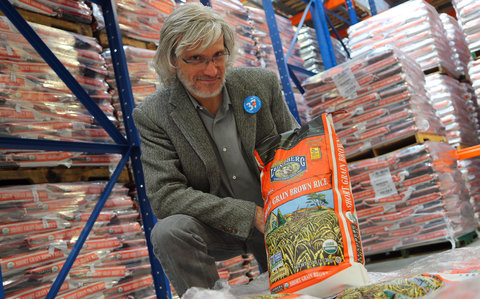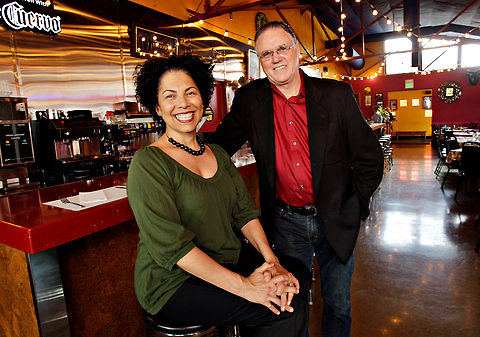 Jim Wilson/The New York Times Tim Schultz: “I certainly don’t eat any less rice than I used to.”
Jim Wilson/The New York Times Tim Schultz: “I certainly don’t eat any less rice than I used to.”
Case Study
What would you do with this business?
Last week, we published a case study about Lundberg Family Farms, a fourth-generation family farm that is located north of Sacramento. Founded in 1937 by Albert Lundberg, the company has 225 employees and grows rice — 70 percent of it organic — on a total of 17,000 acres.
In September, as the case study explained, Consumer Reports released the results of independent lab tests that found inorganic arsenic, a carcinogen, in a variety of rice and rice products. This came on the heels of a Dartmouth study, released in February, that showed inorganic arsenic in brown rice syrup. The entire rice industry has been affected, and Lundberg was flooded with calls and e-mails from customers concerned about the health implications. Although the government regulates the amount of inorganic arsenic in drinking water, there are no standards for food.
The company decided the best strategy was to be open and transparent with customers. The farm’s leaders immersed themselves in research about arsenic and inorganic arsenic, hired scientists and worked with researchers at agencies like the Food and Drug Administration and the USA Rice Federation to try to determine where the arsenic was coming from and how to lower its levels. Much of the information, along with a video addressing the issue, was posted on the farm’s Web site.
So far the company’s sales remain on target, but Tim Schultz, a third-generation Lundberg (by marriage), said the problem of inorganic arsenic looms large and its ultimate effect on business remains unknown. The only way forward, he said, is to continue sharing information and conducting research into mitigation strategies. He discussed the family’s approach and responded to reader comments in a brief interview.
Did you learn anything from the reader comments?
One thing we learned about was European Union safety data for arsenic. We will definitely be doing some research into that. It might be something we could use as another data point for consumers to help them understand what the arsenic levels mean.
Someone suggested we conduct some of our own health studies. That was an interesting idea, but we think it would be challenging to match or exceed the kind of scientific research places like the F.D.A. or Codex do on a national and international scale. They’ve got such incredible scientific resources at their disposal and there are a lot of really talented people working on this. It’s hard for me to imagine we would be able to come close to matching anything they could do. We’re just trying to stay connected and find out what they are finding out. We get updated regularly.
Are there any reader questions you want to answer?
A few readers suggested we might be farming polluted ground. A challenge for us is that according to the 1984 U.S. Geological Survey, the average level of naturally occurring arsenic in U.S. soil is 7 parts per million or 7,000 parts per billion. It can be anywhere from .1 parts per million, which is 100 parts per billion, to 97 parts per million, which is 97,000 parts per billion. What this says to me is that arsenic is naturally occurring, and it’s not something we’ve done to the ground. I don’t dispute that we haven’t treated the environment particularly well as a society. However there is a lot of naturally occurring arsenic in the soil, and my guess is that it’s been there for millennia.
There was some criticism from readers but far more support for your openness. Have you done anything or continued to do anything to expand that approach?
We have continued to update our site with new information. We also attend any forums we hear about, where information is presented by arsenic specialists and rice researchers. A reader suggested we let people sign up for e-mail alerts when there is new information to share, and we are looking into how to do that now.
Has the family learned anything further about what you might do about the arsenic?
The biggest opportunity for mitigation we see at the moment is looking to reduce uptake of arsenic in the soil by the rice. Some varieties of rice seem to take up less and it appears basmati is that way. So we want to find out what is different in the basmati plant from, let’s say, the medium grain rice.
Have family members altered their levels of rice consumption?
We haven’t. I certainly don’t eat any less rice than I used to. A reader suggested we show a video of four generations of our family and that we eat rice and we’re fine. But many of the other comments said we shouldn’t think of this as a public relations problem, and I take that very seriously. We want to handle this as responsibly as we can, and that means not just putting up pretty pictures of our family eating rice.
Article source: http://boss.blogs.nytimes.com/2012/11/28/lundberg-farms-responds-to-reader-comments/?partner=rss&emc=rss

